 Escambron, a tree native to Puerto Rico. If you say escambron with just a little bit of the emphasis on the right syllable and slur it a bit, you might just be saying a bad word (shut your mouth…)
Escambron, a tree native to Puerto Rico. If you say escambron with just a little bit of the emphasis on the right syllable and slur it a bit, you might just be saying a bad word (shut your mouth…)
Let’s talk about it’s scientific name.  I’ve always known it as a type of clerodendrum, C. aculeatum to be exact, but, upon researching the species, I think the scientists may have moved it. Based on what I’m reading, these plant scientists have been doing genetic testing and figured out that they no longer belong in the genus clerodendrum, but a different genus called volkameria (volkameria aculatea to be precise). Check here and here and here. The last link is called The Red List, which determines how endangered a plant is. It also has the Puerto Rican common name in the description escambrón.
I’ve always known it as a type of clerodendrum, C. aculeatum to be exact, but, upon researching the species, I think the scientists may have moved it. Based on what I’m reading, these plant scientists have been doing genetic testing and figured out that they no longer belong in the genus clerodendrum, but a different genus called volkameria (volkameria aculatea to be precise). Check here and here and here. The last link is called The Red List, which determines how endangered a plant is. It also has the Puerto Rican common name in the description escambrón.
I’m not going to get in another fight with old timers or nativists who refuse to change their speaking habits after those in charge of naming plants change the names of trees (like chloroleucon tortum) or when they are misidentified (like ficus microcarpa being called f. retusa), but I’ll be calling it a volkameria from now on.
I do need an identification on this fungus though. It might be a type of Cortocioid fungus, which I think, is mycorrhizal in nature. But I don’t know. I’d be terrible on one of those survival shows. Not only would I be worrying about who’s watering my trees at home, but I’d be too busy trying to collect specimen bonsai to find food. 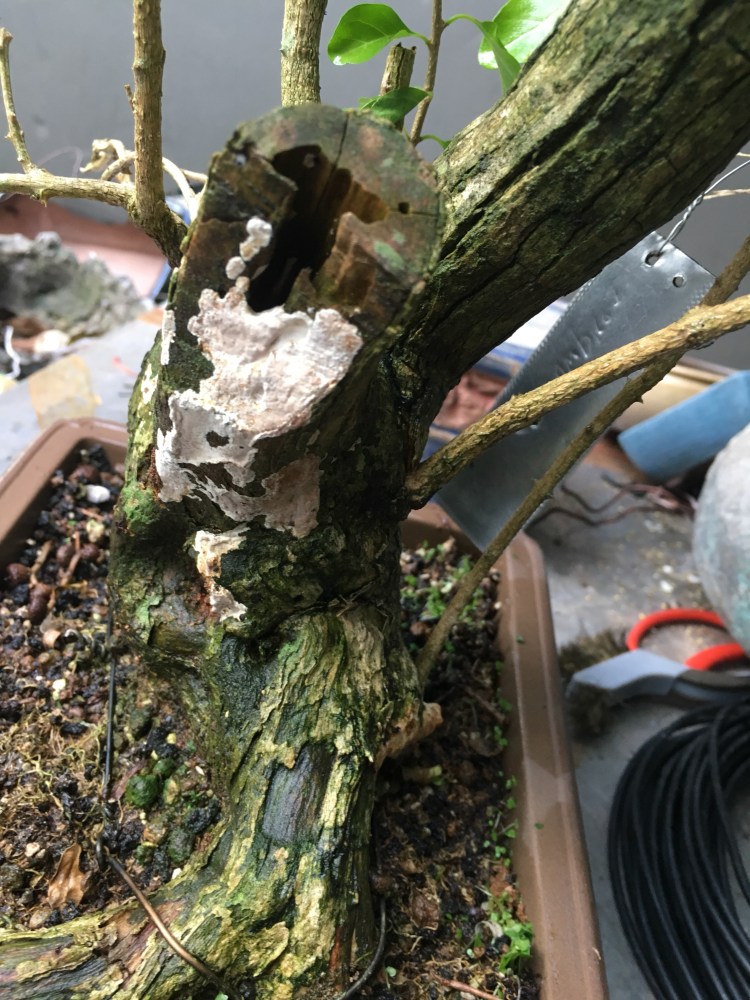
I’ve seen the fungus on bougainvilleas before as well. Both their wood rots similarly.
 It kinda tastes like bacon….
It kinda tastes like bacon….
I think this is my front. I’ll need to do some carving.  (For all you scrambling to identify the fungus to see if I’ve poisoned myself, no worries, I didn’t taste it, I’m not that dumb…..usually)
(For all you scrambling to identify the fungus to see if I’ve poisoned myself, no worries, I didn’t taste it, I’m not that dumb…..usually)
This was the previous front. I think. 
A little background on the tree, it was collected by a former friend named Michael Feduccia from Puerto Rico. It was either a workshop tree at a Bsf convention that Michael taught or a Kawa Bonsai Society, Joy of Bonsai event.
The bonsai enthusiast that took the class is Christen, from South Carolina (her hometown got hit hard from Hurricane Florence, if you can spare it, donate to your favorite charity, Christen recommends The Cajun Navy and Operation BBQ Relief )
She asked me at the 2018 Winter Silhouette show in Kannapolis if I’d take it home to Florida and develop it, Florida being a little more hospitable to a tropical tree than the Carolinas. And here I am, working it today.
 One characteristic of the escambron is how brittle the branches are. But, if you catch them while they’re young……
One characteristic of the escambron is how brittle the branches are. But, if you catch them while they’re young……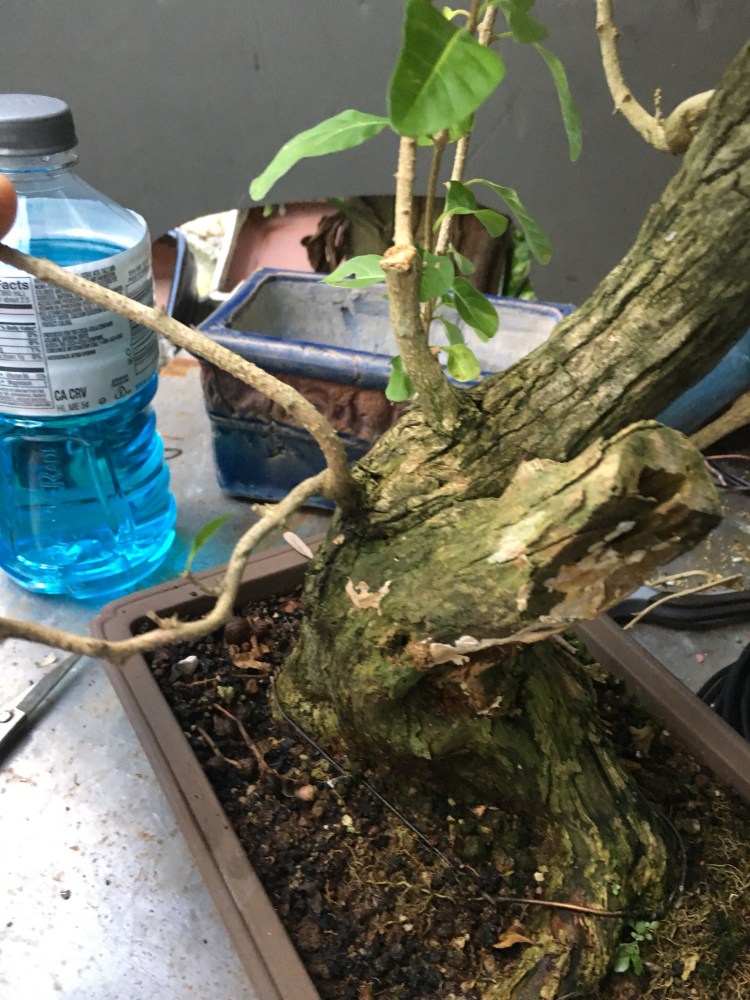 …..they’ll still bend.
…..they’ll still bend.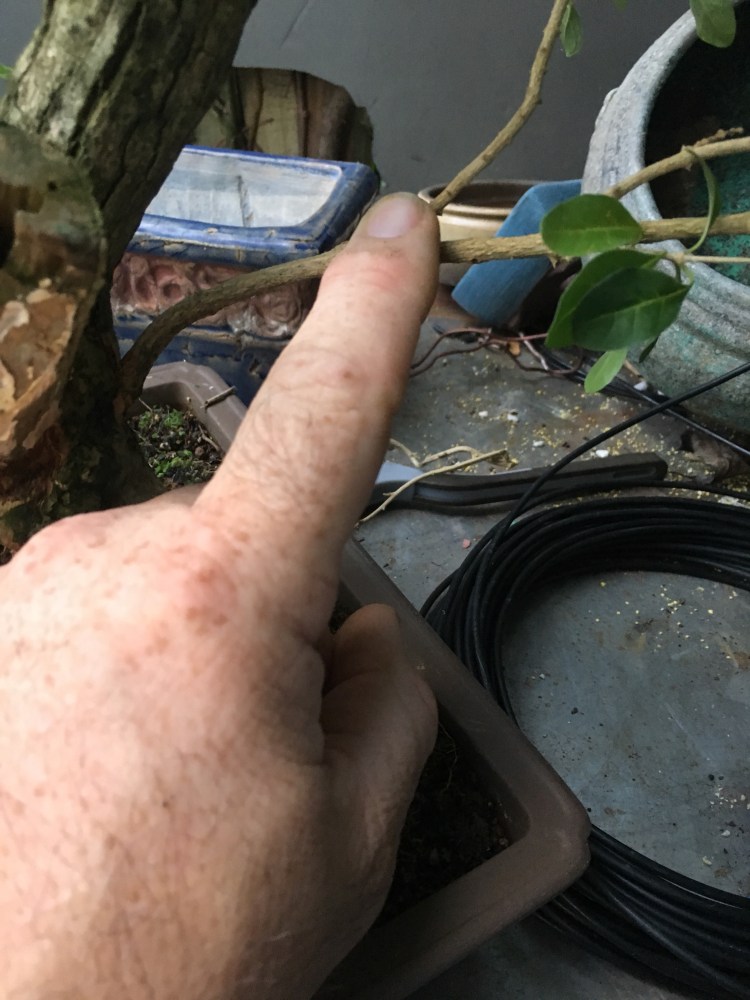
But I am going to cut it way back before I carve it.
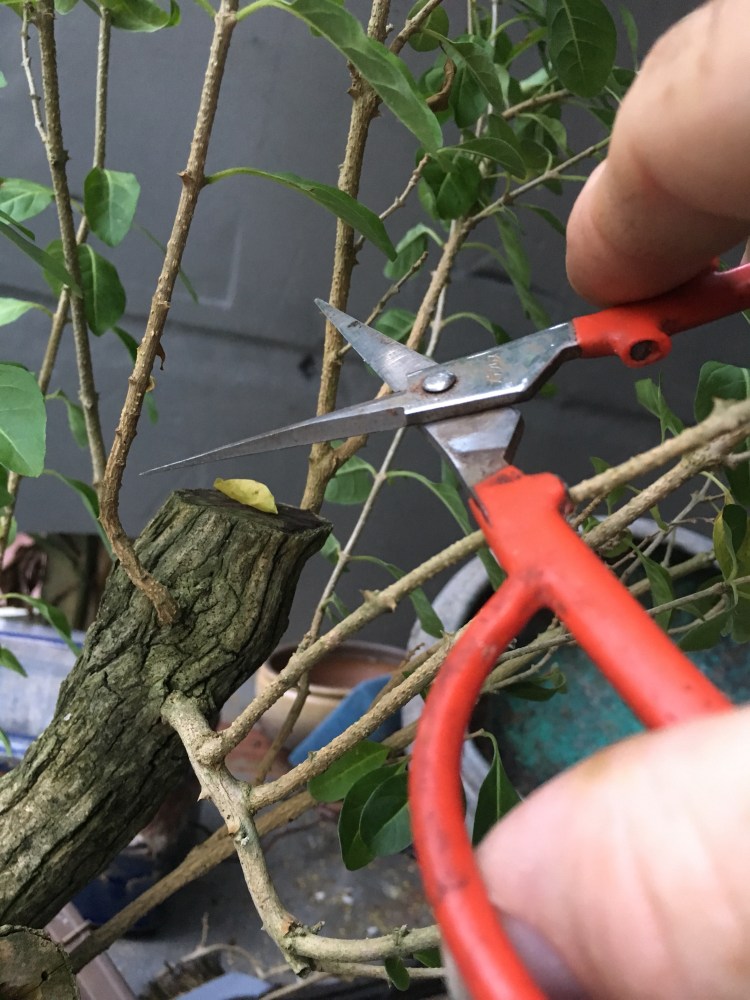
Like many tropical trees, it bites, it has these small thorns.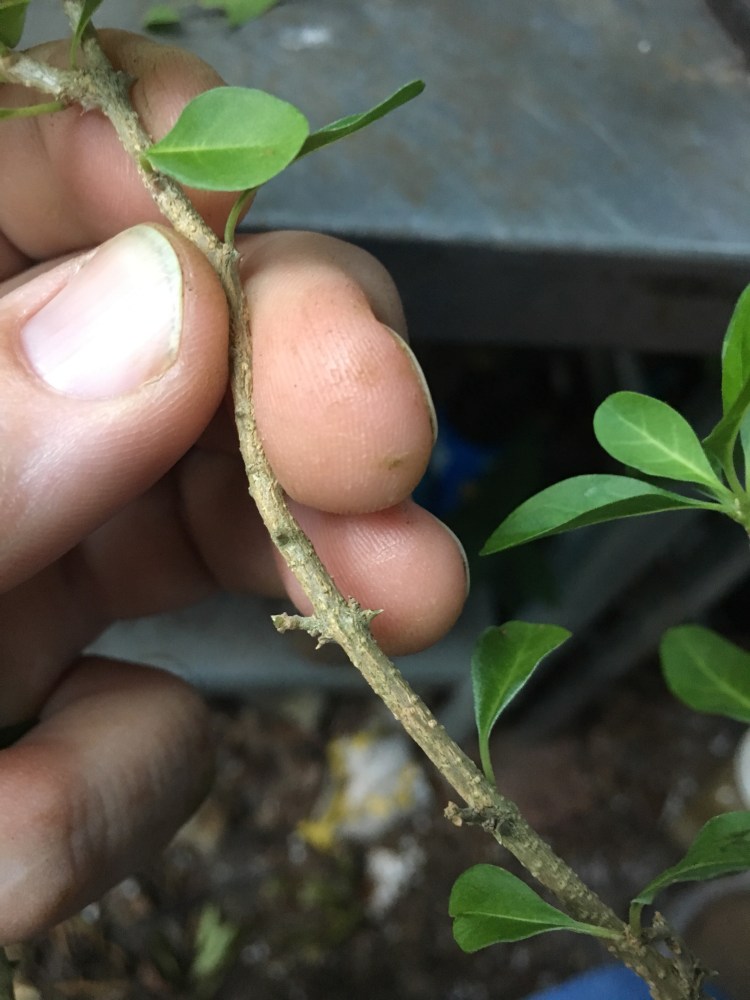 Insidiously tiny ones that jam into your fingers as you are wiring and bending the branch.
Insidiously tiny ones that jam into your fingers as you are wiring and bending the branch.
Ah, we can see the tree now. It has some structure to work with. 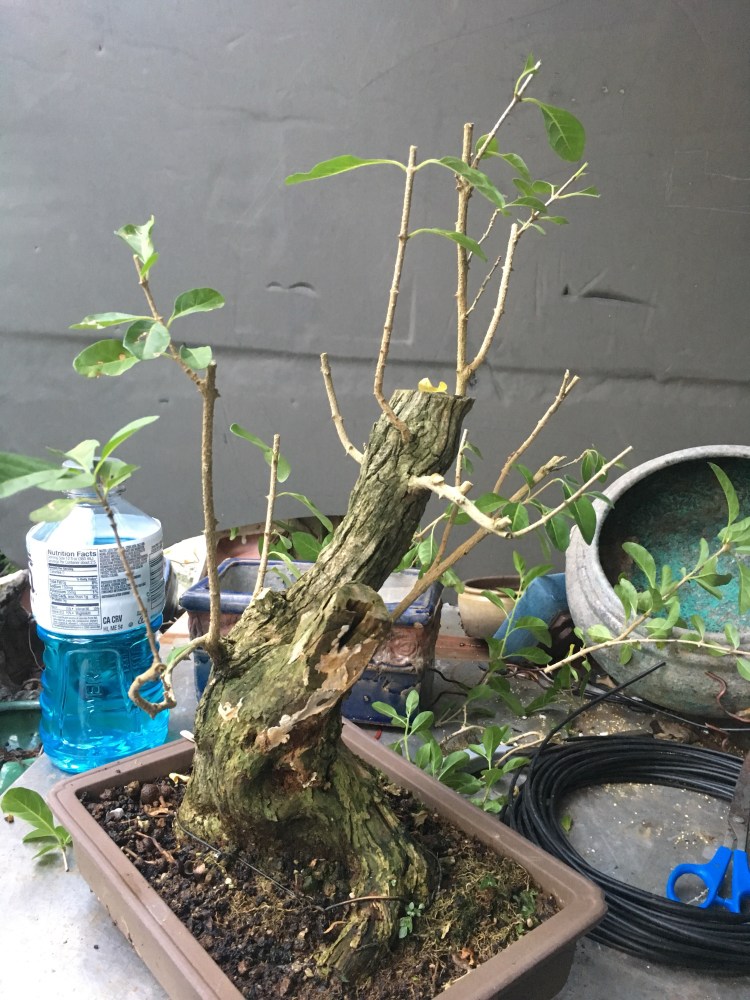 It won’t be one of those “omg, he’s a magician” stylings today (those happen with trees that have been developed for a long time and then let go for a year, so the “styling” looks miraculous. I try to stay away from those “easy” trees as most bonsai practitioners can’t afford them and I am, if nothing else, a Working Class bonsai artist). It’s more instructive for you all to see the initial styling, and then watch it through the months and years, as it develops into a good bonsai, learning along the way.
It won’t be one of those “omg, he’s a magician” stylings today (those happen with trees that have been developed for a long time and then let go for a year, so the “styling” looks miraculous. I try to stay away from those “easy” trees as most bonsai practitioners can’t afford them and I am, if nothing else, a Working Class bonsai artist). It’s more instructive for you all to see the initial styling, and then watch it through the months and years, as it develops into a good bonsai, learning along the way.
The decision.  Where is the top? Well, you’ll notice the bulge on the trunk? One of the purposes of carving is to give the tree some better taper.
Where is the top? Well, you’ll notice the bulge on the trunk? One of the purposes of carving is to give the tree some better taper.
And since I’m carving, and I want you to see it, I’ll choose the back branches as the new top. 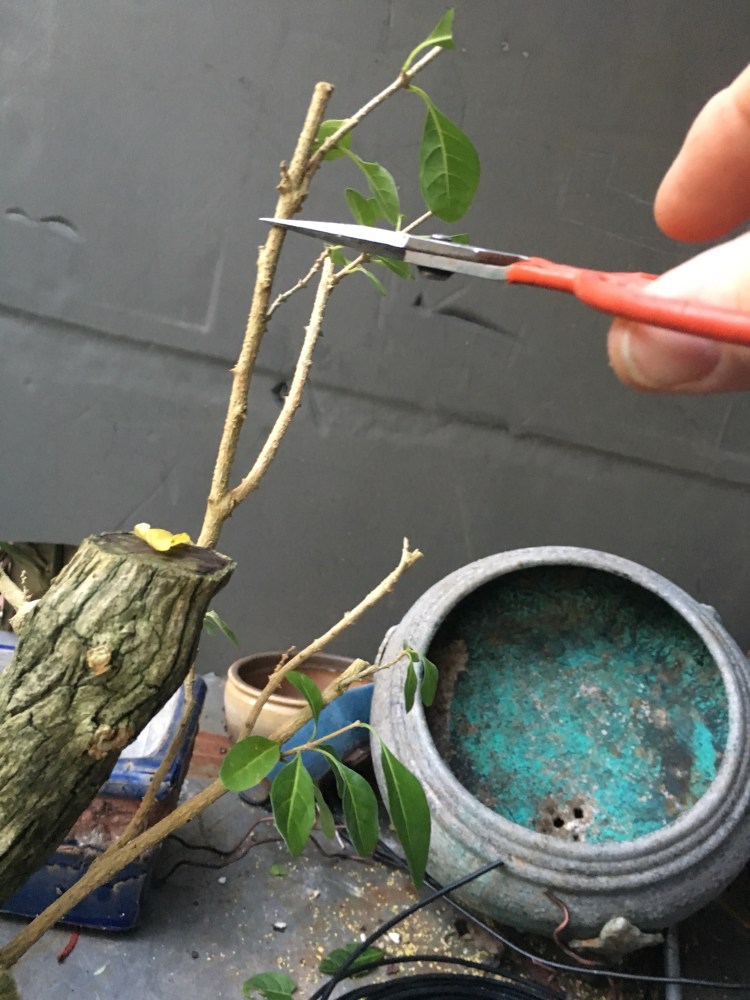
The power tool I’ll be using is the medium duty Makita. It’s a good tool for removing a modest amount of material and doing some shaping. I’d recommend it before a Dremel definitely, as you can get a smaller collet for smaller bits.  I’m only using one bit today, but I wanted to show you the two I got from the new US distributor of the Samurai line of carving bits, Artisan’s Bonsai, near Tampa Florida.
I’m only using one bit today, but I wanted to show you the two I got from the new US distributor of the Samurai line of carving bits, Artisan’s Bonsai, near Tampa Florida. 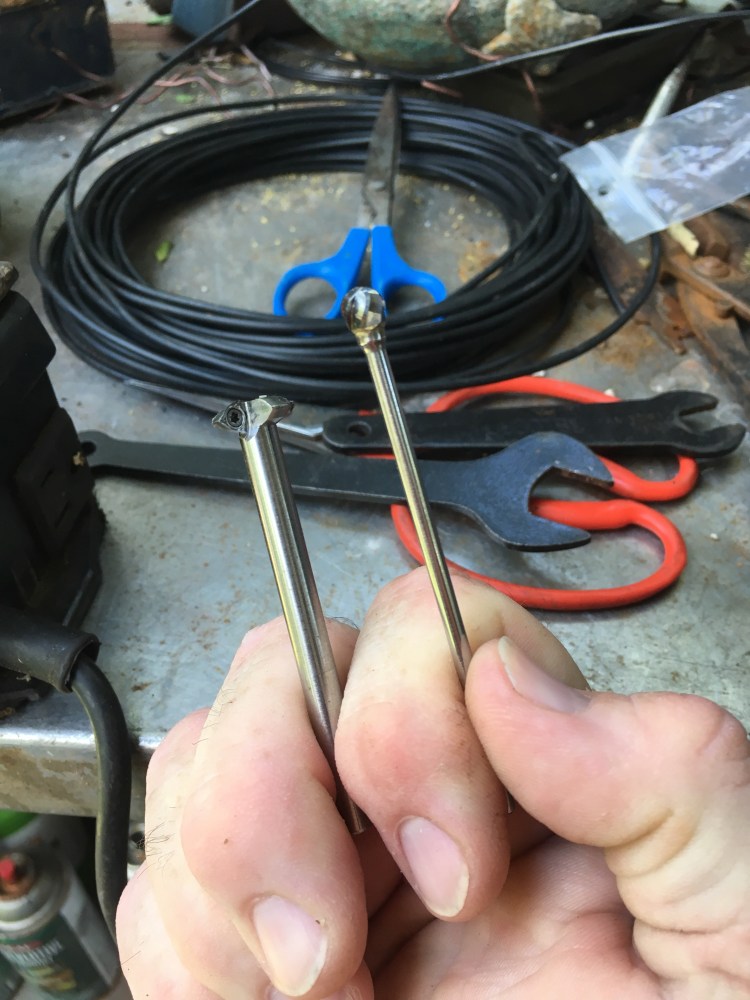 The one on the right is called The Ronin. On the left is just a ball end carver like you’d use on a root stand (like I did here. It came out ok, but too bad about Sean though, I used to like him.)
The one on the right is called The Ronin. On the left is just a ball end carver like you’d use on a root stand (like I did here. It came out ok, but too bad about Sean though, I used to like him.) 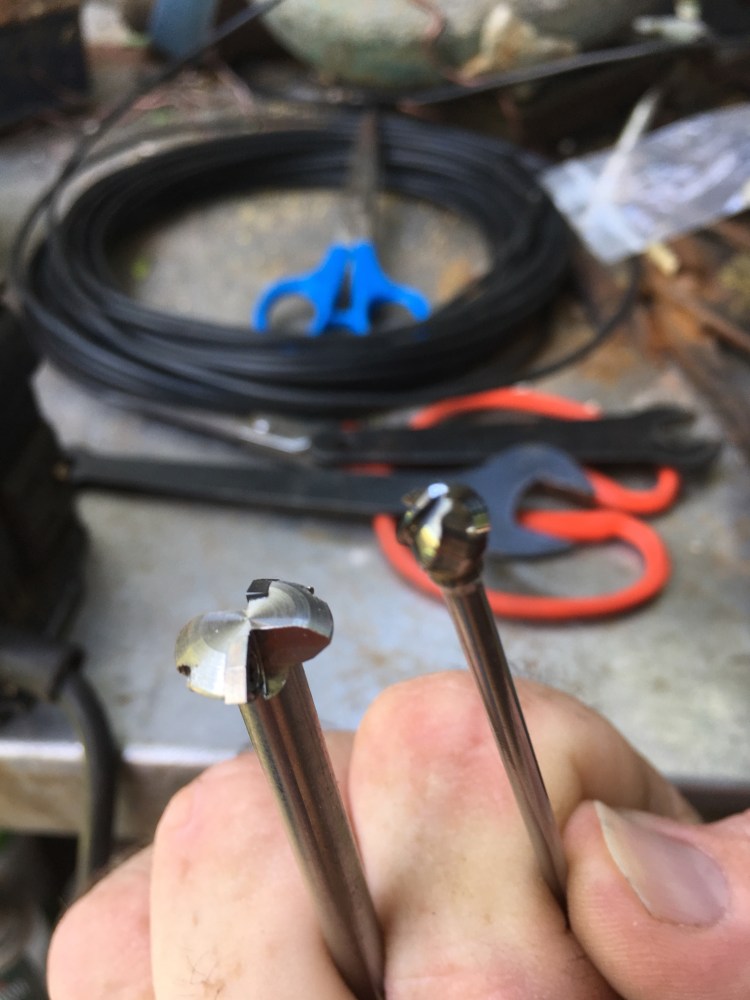 If you’re not in the Central Florida area, you can order the carving bits here: samuraitoolsus.com
If you’re not in the Central Florida area, you can order the carving bits here: samuraitoolsus.com
I said just one bit and I meant it.  Before I carve I’ll go over some safety equipment I use and highly suggest.
Before I carve I’ll go over some safety equipment I use and highly suggest.
Safety glasses: if you can’t see, you can’t carve.
Gloves: no gloves, no love.
A dust mask: breathing ain’t no joke.
And finally, no matter what power tool I use, I use a variable speed foot pedal: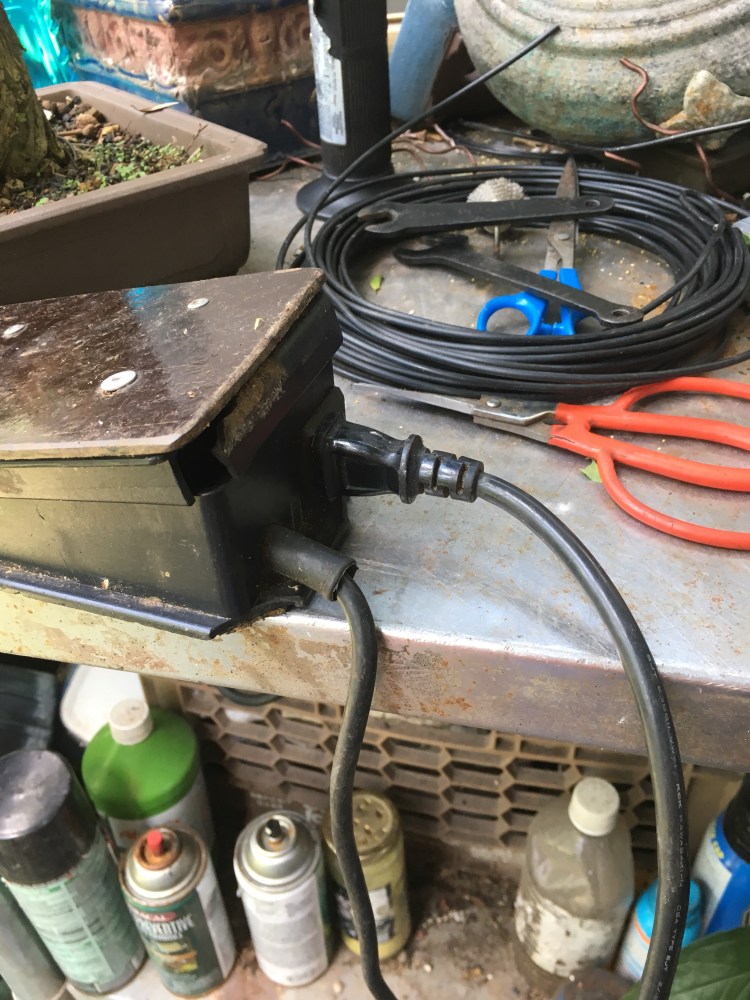 You plug the tool into it, and plug it into the power supply.
You plug the tool into it, and plug it into the power supply. 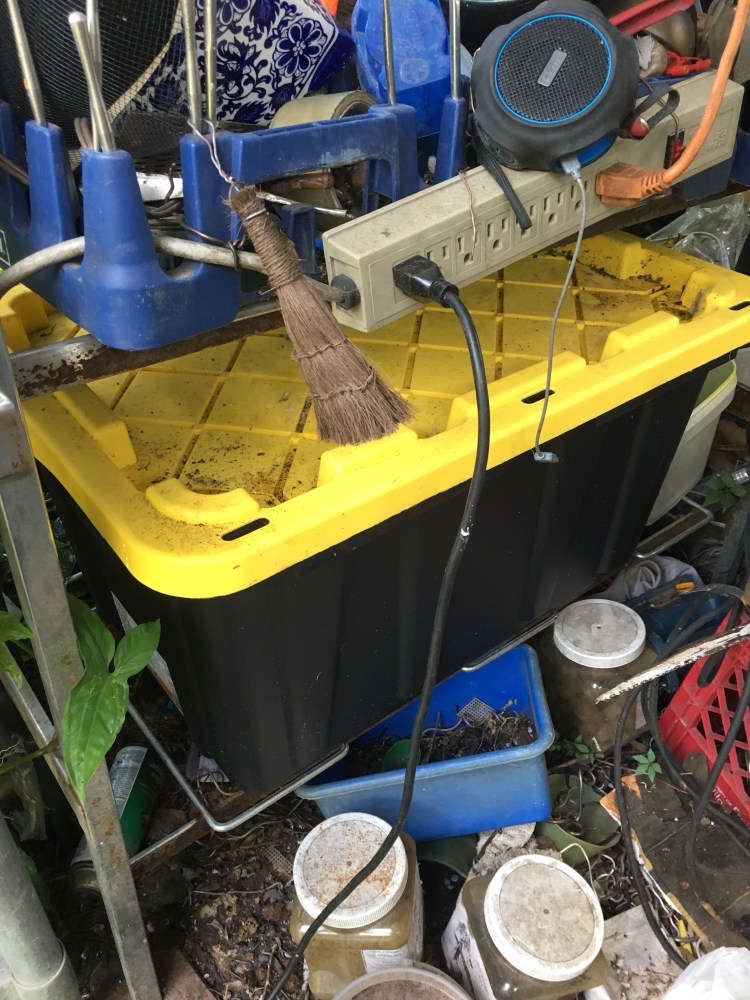 One reason for a foot pedal: most of these tools have just an on or off switch. If you drop the tool while it’s still running, the only thing you can do is try to unplug it. Otherwise it bounces on the ground and you have to dodge it as it chases you around The Nook (or your nook, or studio, or back porch. Wherever you do that bonsai you do).
One reason for a foot pedal: most of these tools have just an on or off switch. If you drop the tool while it’s still running, the only thing you can do is try to unplug it. Otherwise it bounces on the ground and you have to dodge it as it chases you around The Nook (or your nook, or studio, or back porch. Wherever you do that bonsai you do).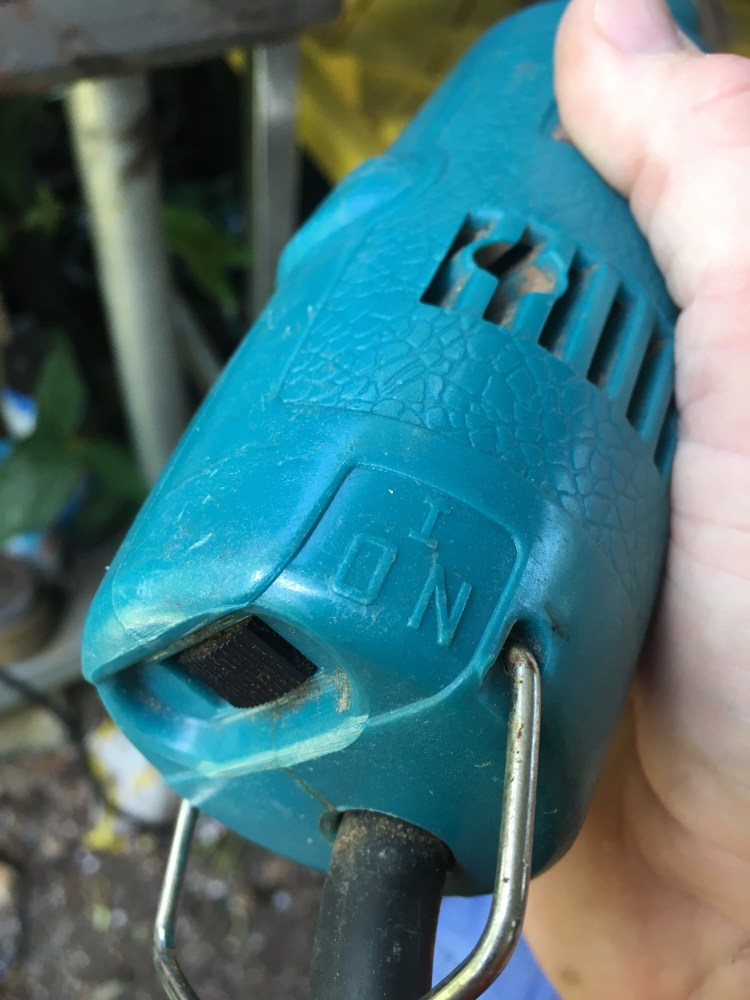 With a foot pedal, when you take your foot off the pedal, the tool shuts off. Safe as milk it is.
With a foot pedal, when you take your foot off the pedal, the tool shuts off. Safe as milk it is.
The second reason is the variable speed. There are just on or off foot pedals but you need the variable speed kind. I can go fast or slow, depending on the rating of the carving bit. 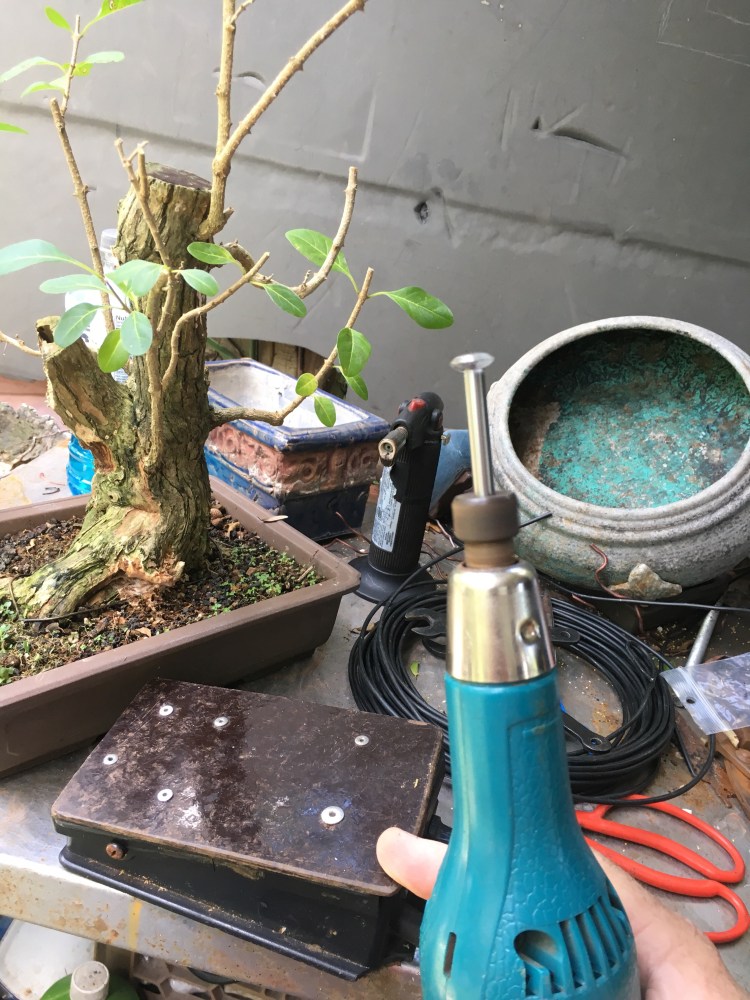 This comes in handy when using a wire brush, which likes to fly apart at high rpms.
This comes in handy when using a wire brush, which likes to fly apart at high rpms.
 Before carving, above.
Before carving, above.
After carving, below. 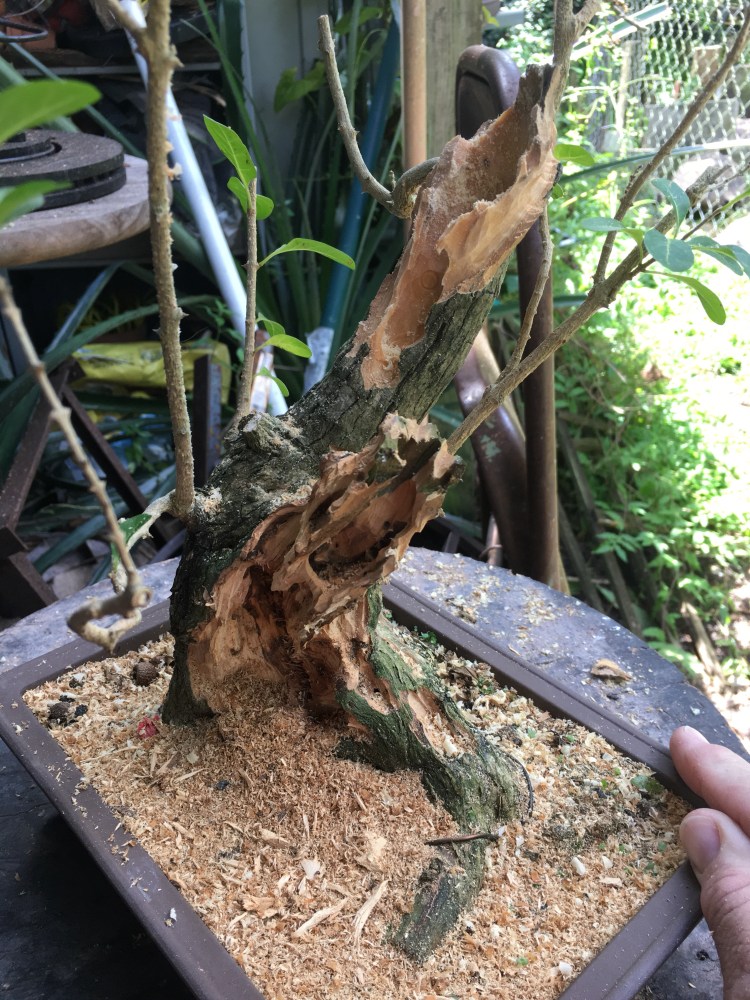
Now, for wire….
This tree is very much like a bougainvillea. Not just in the softness of the wood but also in the way the branch attaches itself to the trunk.
The only way I can think to describe it is “like a socket” 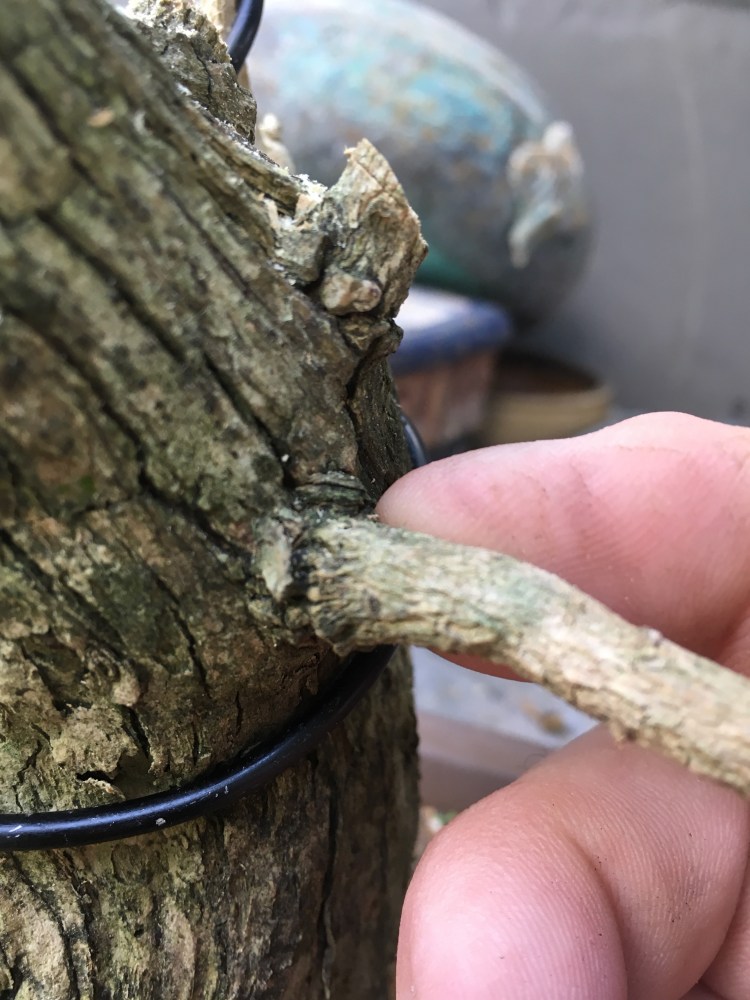
Meaning that if you flex it too much it pops out, like your arm out of your shoulder if it’s flexed too much by Biff, your childhood bully that just needs some positive reinforcement from his parents…..
……like I did here….. To get the bend I need, I brace it in place (just some gentle guidance, you’ll be ok Biff, we love you….) ….and
To get the bend I need, I brace it in place (just some gentle guidance, you’ll be ok Biff, we love you….) ….and 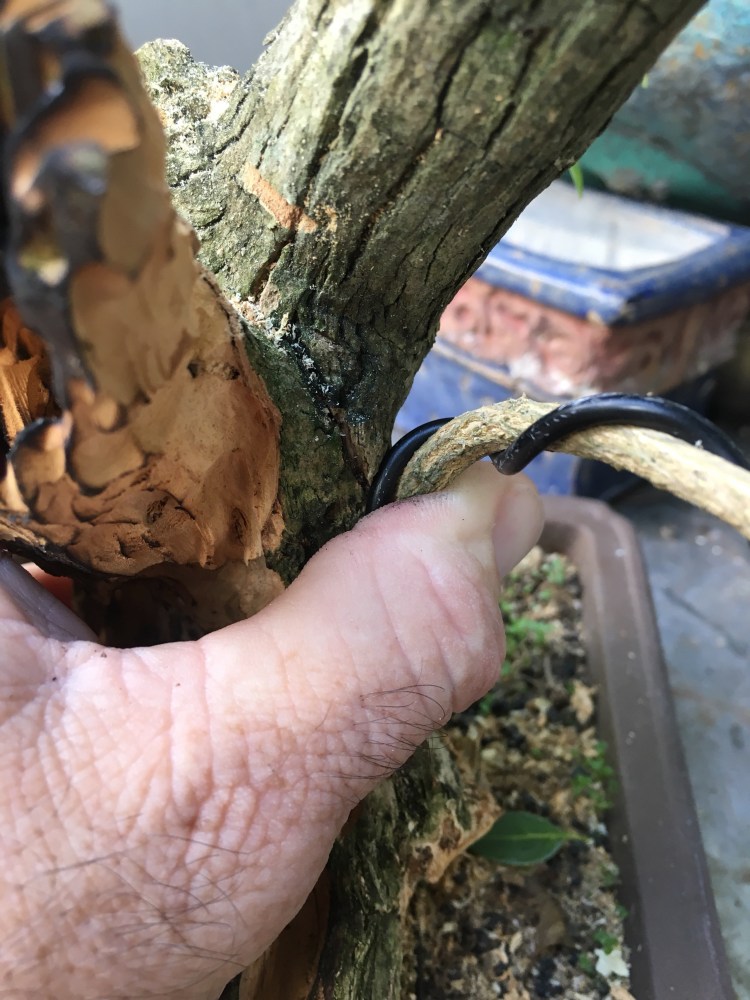 ….not bad……I don’t generally like my branching to come off at that 27 degree angle anyway.
….not bad……I don’t generally like my branching to come off at that 27 degree angle anyway. 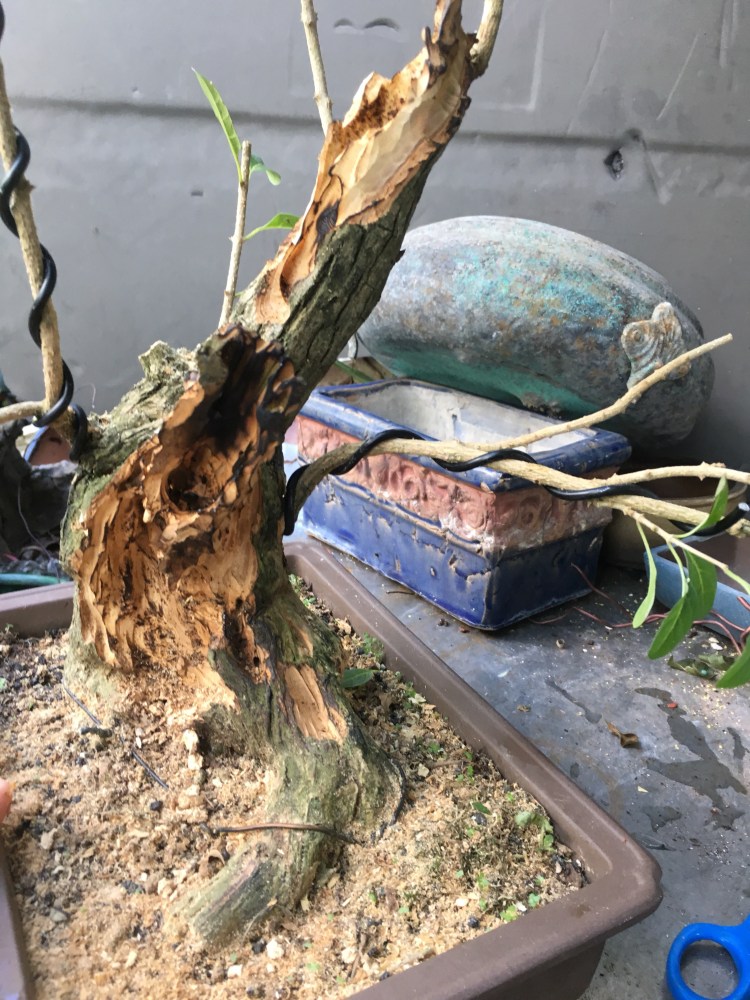
Now we get to some physics. It’s been said that wiring like this is akin to wiring like a four year old. Not to mention I learned it from a septuagenarian, let’s talk science a little. When we bend a branch, the inside of the bend is being compressed, and the outside is being stressed. This stress site is where it cracks. But…BUT….if you cover that outer layer, it isn’t an outer layer anymore, and it gets compressed, and doesn’t crack. It is this principle of stress and compression that is used when you wrap a branch in raffia, or self amalgamating electricians tape or an old inner tube, or your wife’s nylons….. It keeps the branch from cracking.  Amazingly, the same thing happens when a wire is wrapped around a branch. So it makes sense to spread out the wire (instead of the “approved” method of making the wire look pretty by placing it next to itself). So when you bend, the wire is more likely to protect the branch from cracking.
Amazingly, the same thing happens when a wire is wrapped around a branch. So it makes sense to spread out the wire (instead of the “approved” method of making the wire look pretty by placing it next to itself). So when you bend, the wire is more likely to protect the branch from cracking.
And it works.
Even if you don’t believe in it. Like gravity. 
It’s repot time, before the cold and snow of winter comes…..who am I kidding? I live in Florida so I don’t have to deal with snow. And I get to do bonsai all year ’round.
I think the tree wants to be repotted. If you’re unsure of how often to repot, if the roots are growing out of the drain holes, that’s a good indication. 
Or, if like below, when you take the tree out of the pot, and you can cut a finger on the root ball it’s so sharp……
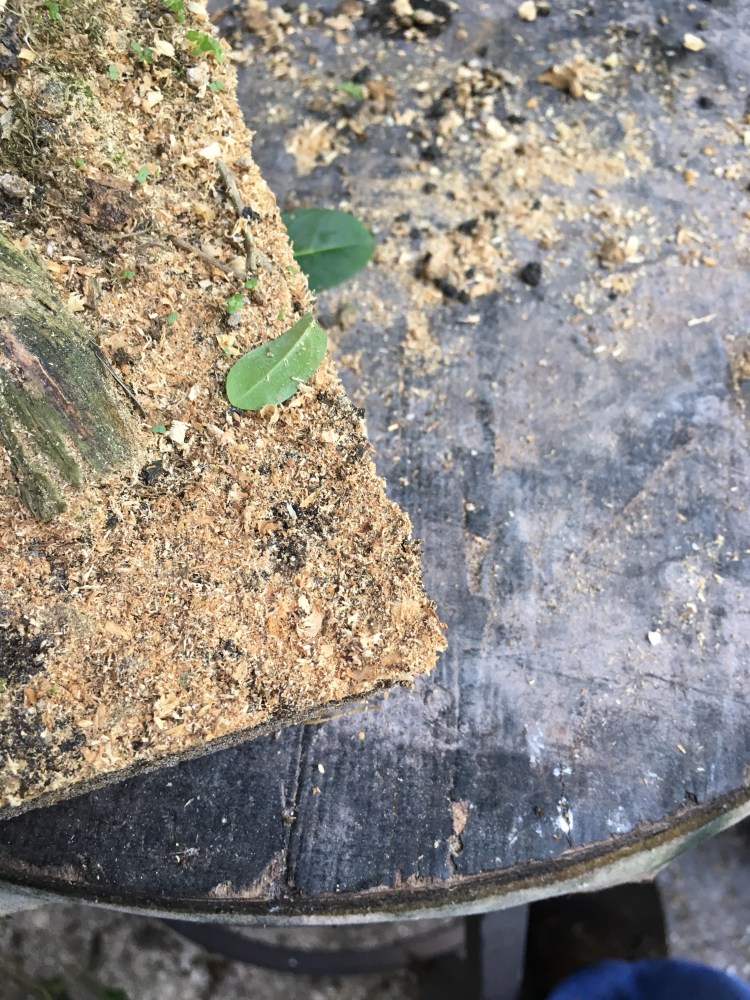
Where’s my root rake? I swear Teeco, put my tools away!  You’d better not have put it in your tool bag….
You’d better not have put it in your tool bag….
Never mind, I found it…sorry…
 …damm that’s a lot of roots!
…damm that’s a lot of roots!
And, because I know you’ll ask, the soil it was in is a pumice, lava rock, expanded shale or clay (or both) and akadama. 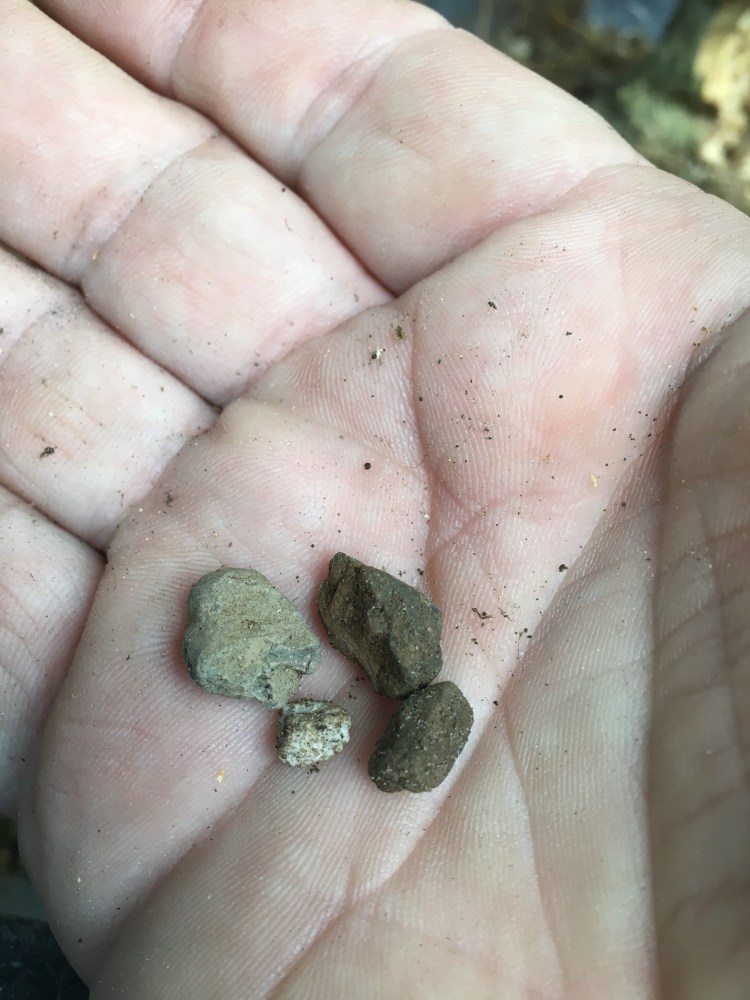
The soil I’m putting it into is pumice, lava, expanded slate, zeolite, and, to test it out since I just got a sample from American Bonsai tools, some fir bark. 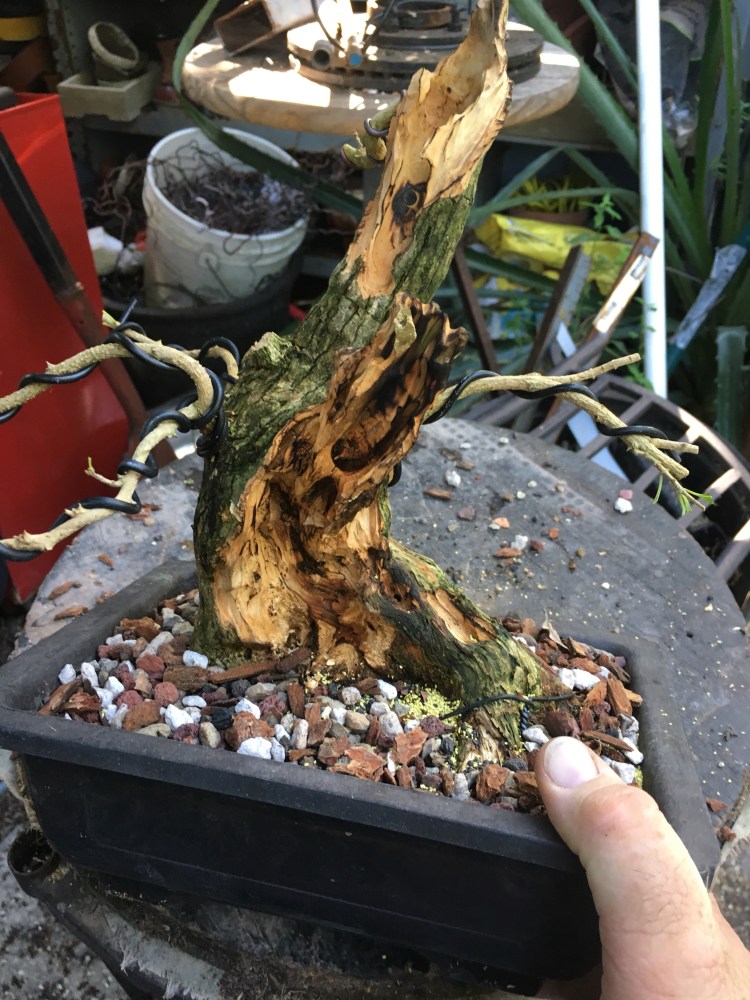
And that’s all I can do to it today. 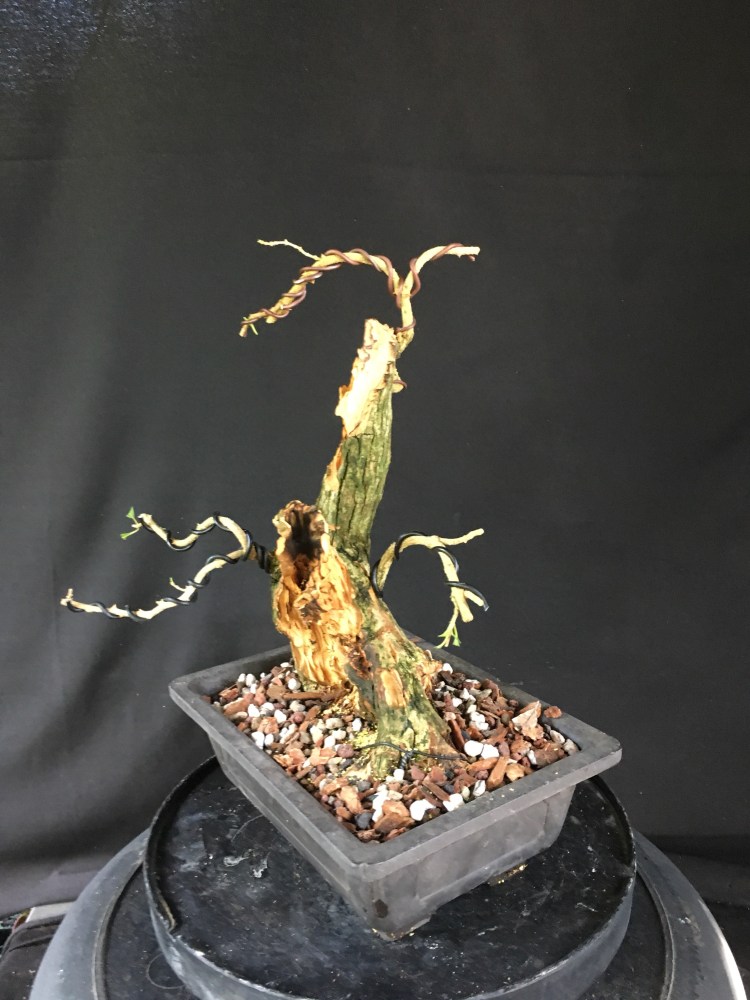
Like the song says, “Let it grow, let it grow!”

Or is that what it says?
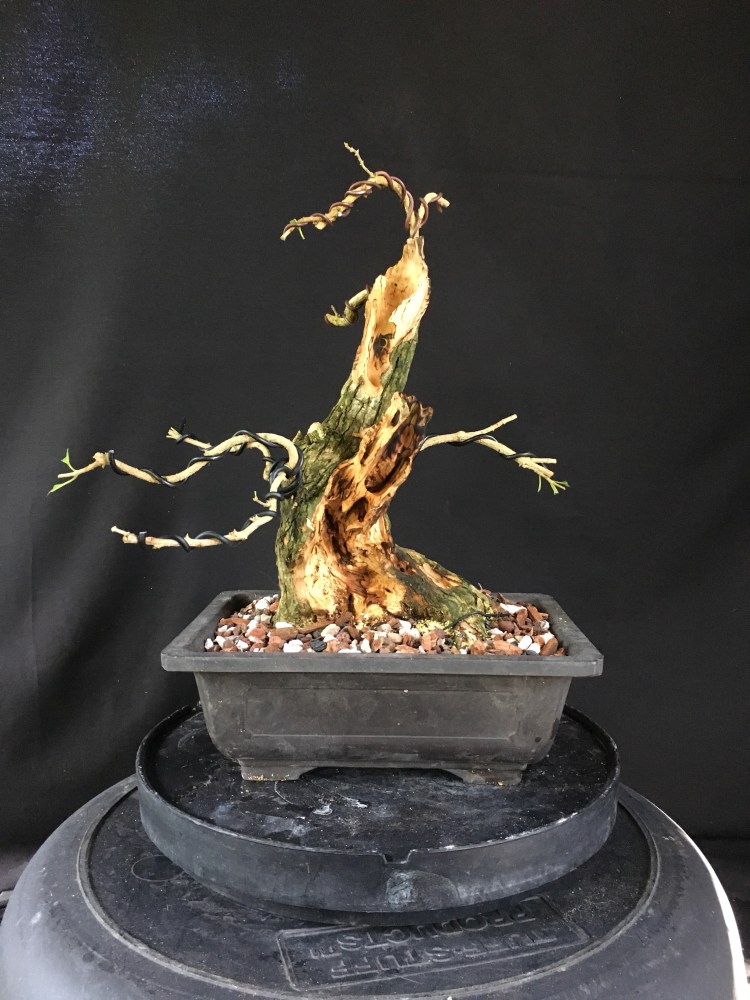
I do have one more escambron that needs repotting. Sooo…..very quickly…. It’s a little more well developed. But I’ve let it grow this season to gain strength.
It’s a little more well developed. But I’ve let it grow this season to gain strength.
It’s a totally hollow trunk. 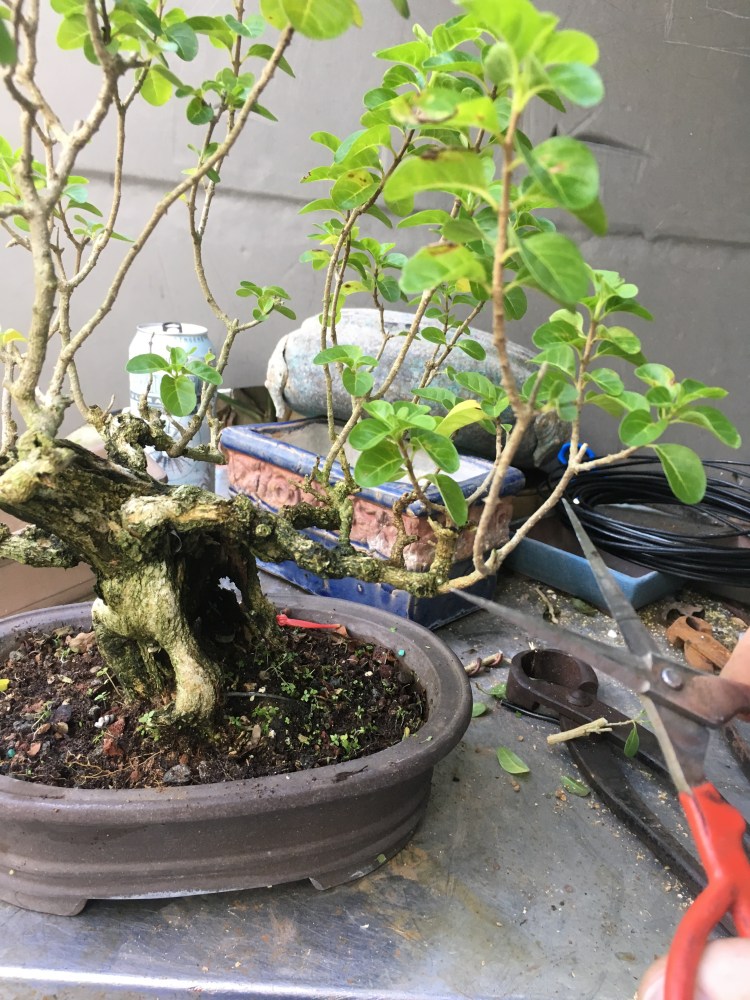 Which is pretty normal for one.
Which is pretty normal for one.
Orf wiv it’s ‘ed!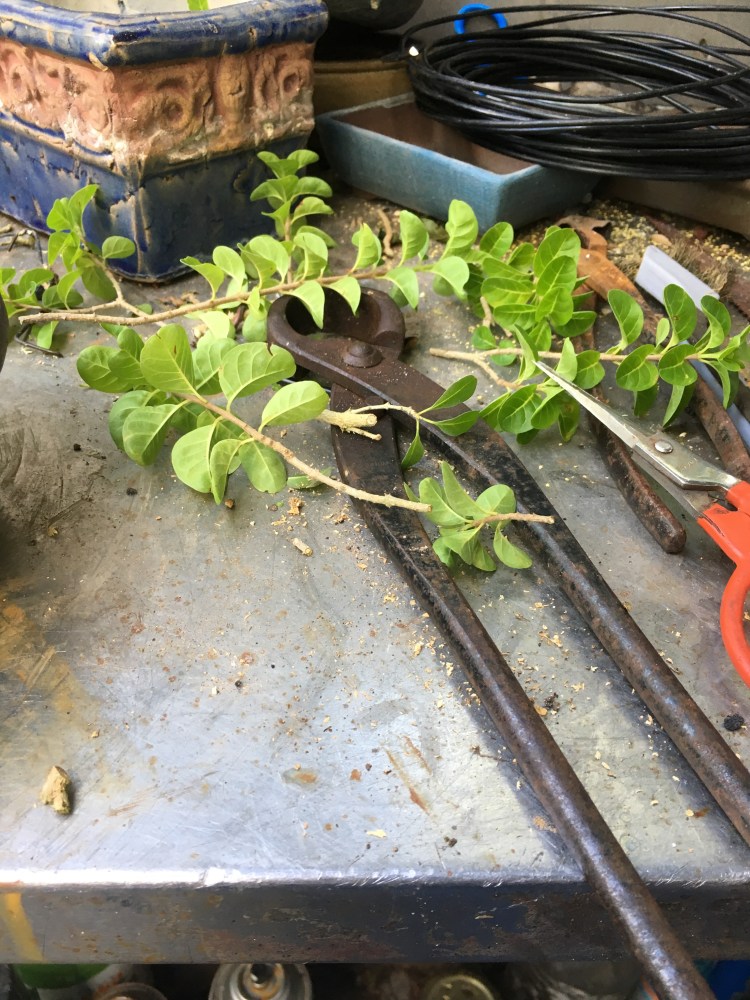
Good roots, in a mix similar to mine…..

Combed out……
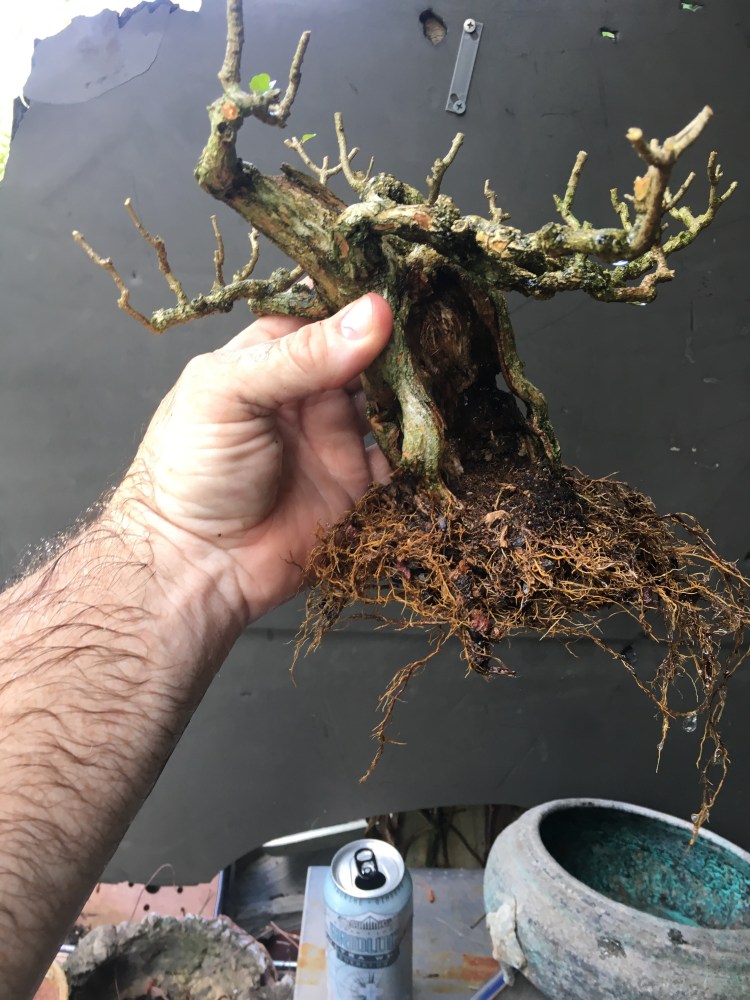
And repotted…….
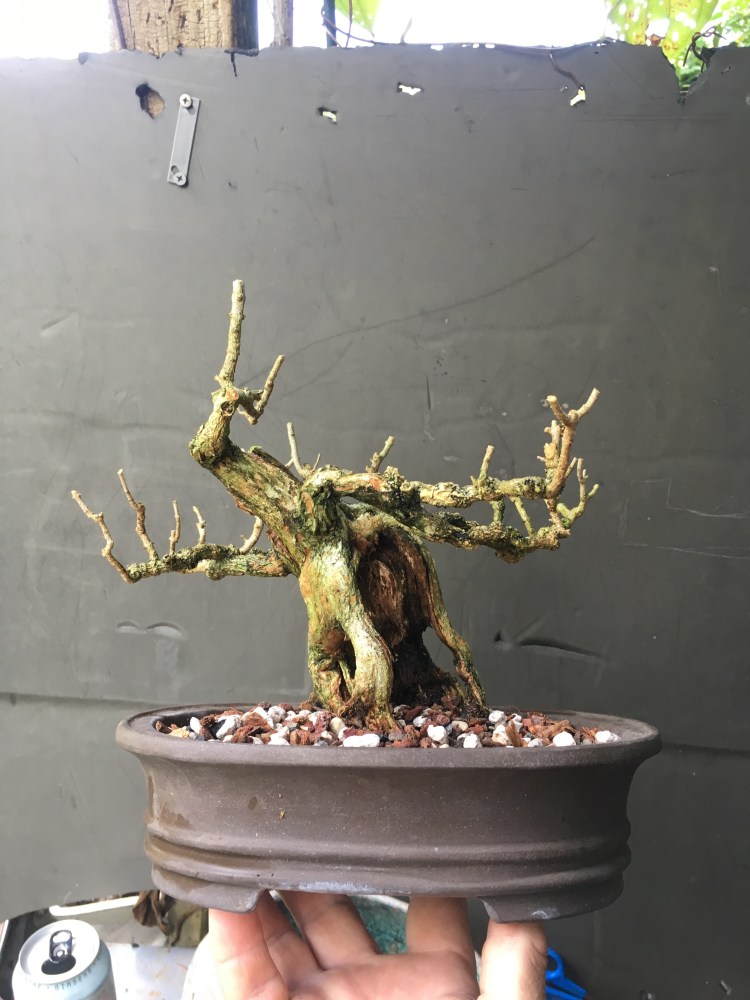
And Bob’s yer uncle!
Next time, on Celebrity Death Match Bonsai Styling, a tree I got from…..dum dum dummmmmm…..an enemy!
See ya’ real soon!
Dang…good read. You have no idea how much I needed and appreciated this posted up. And the cliff hanger ending! I am at the edge of my seat.
LikeLike
do you put any type of sealer on soft woods..
LikeLike
I don’t, I just let it rot by itself
LikeLike
That’s the best title for a bonsai article I have ever seen. It made me chuckle, I have to admit. Great information and as always great entertainment.
LikeLike
Good afternoon Adam,
You do such great work carving. I do not have any carving tools, but know I will be carving on some of my bonsai sooner or later. I would appreciate a recommendation regarding the tool itself, bits and any books or DVDs on how to carve. Is it best to just buy Master Carver system I have seen you use? Any information would be appreciated
LikeLike
That depends on how much carving you will be doing. I carve all the time and the Mastercarver is worth the cost. If you only have a few trees, get a small diegrinder or rotary tool.
Start with the carbide burrs like SabreTooth for bits.
And I’m not sure of many carving videos out there. I have a few YouTube videos myself but I’m not aware of any other in depth tutorials.
LikeLike